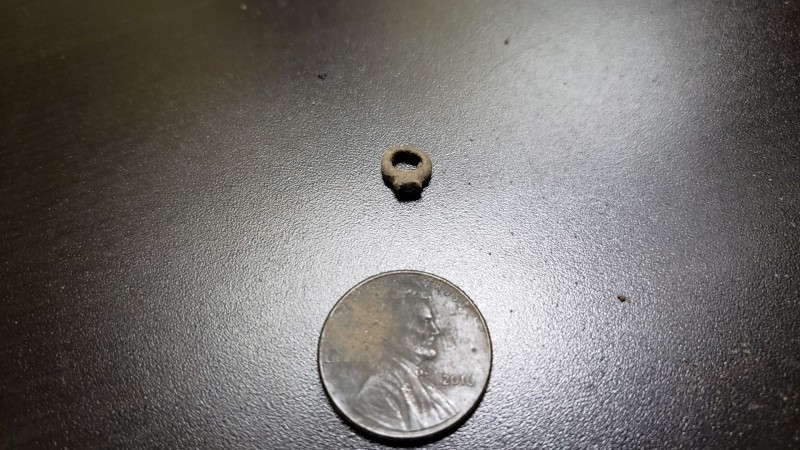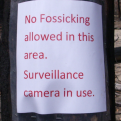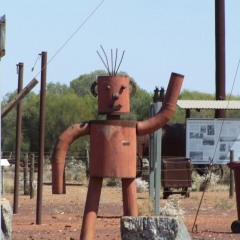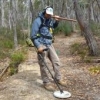Leaderboard
Popular Content
Showing content with the highest reputation on 06/20/2019 in all areas
-
That PLSS pattern indicates that the area is unprotracted and possibly unsurveyed. First about protraction: When an area has not been physically surveyed and monumented in the Public Land Survey System (PLSS) imaginary lines that generally follow where the survey might be found if it were surveyed are drawn on the map. These lines are protracted by implication, there are no survey pins or monuments in place on the ground. Protraction is useful for land descriptions but just like the PLSS grid depicted on your map protracted surveys are not to be considered geographically accurate. Since there has been no survey there is no way to know the exact position on the ground until a survey has been completed. On most maps it's virtually impossible to tell the difference between a physically surveyed PLSS grid and a protracted PLSS grid. When an area appears to be unsurveyed and unprotracted on a map it's time for some intense study as to why it's being left that way. You are right to question what appears to be an anomaly. The area you present on your map the PLSS survey has already been completed and the "empty" areas on the PLSS grid are actually the Palovadera land grant to the north and the Santa Clara Pueblo grant to the south. These areas are Royal Spanish land grants that precede the United States and are excluded from the Public Land Survey System. In essence you should treat them as very private lands. Obviously they are off limits to prospecting and claim. Best to avoid them at all costs. No tramping about or exploring without a verified grantee to physically accompany you. And here we come to the real first step to studying land status outside of the original 13 colonies. The PLSS grid is only the spatial reference system and will not tell you anything specific about land ownership or status. You need to dig deeper before entering any area. In this case I took what should always be the first step in finding the actual status of current or former public lands - I obtained the Master Title Plat (MTP) for that Township. These MTP maps have nothing to do with ownership or platting of County or State parcels. Those County maps may be helpful if you are seeking permission on private lands but they have no reliable information on public lands. The MTP is the working document that federal agencies rely on to keep the current land status record. Some of the MTP maps may have been published years ago but when a portion of the public lands they depict changes the map will be replaced with a new one depicting the changes. For that reason they are the first "go to" for all government agencies and public land users when researching an area. Since you are in New Mexico the Master Title Plat was available to you on the GLO site. It might be one or a series of maps (supplements) showing land status for that Township. Those MTP maps and their supplements are closely interrelated with the Historical Index (HI) also available on the GLO. Together the MTP and HI contain the most current status and the history of the land status for any Township. The Master Title Plats are a visual guide to that status but it's important to understand that they do not represent objects on the ground. There are no physical depictions on this map, only land status issues described by reference to the PLSS. Not all States MTPs are available on the GLO yet. If you use the Land Matters Land Status maps you can get the very latest MTP for any given area in the western states direct from a map query. Those maps also display land ownership and management which visually delineate status features like the Santa Clara Pueblo. Having everything in one place and available with a few clicks can really cut your initial research time down. It's never fun to discover that an area you have researched for hours is actually off limits. Always study the MTP first. There is a rather arcane shorthand to the notation on these MTPs that is fairly brief and consistent but often presents a difficult hurdle for the beginner. Land Matters has assembled a group of tutorials to help the beginner get a quick start on reading Master Title Plats. Poke around there I suggest you start with Reading Master Title Plats for an orientation and then move on to the videos etc. Good luck. You've got a bit of work ahead of you but the payoff will be the confidence to know which lands might be open to your prospecting. If you've got more questions just put them out there.4 points
-
Hi Folks I have been busy making quite a few finds recently. After more than a year with the Equinox, it continues to impress me with it's capabilities. Some of my recent finds include some early 1630's Kettle Points and Turtle Effigy, Spanish Silver, KG's and more. I even have had it scuba diving. Unfortunately I wasn't impressed with the volume with the Grey Ghost headphones. I have a new pair of Tony Eisenhower headphones ready to try out with the hopes that the volume is better. We shall see. HH Everyone...3 points
-
I would like to deliver a long dissertation on world monetary and economic dynamics for you folks but I'm going prospecting. With prices up like this I loose a a lot less money mining.3 points
-
I remember gold being around the $500 mark before I got into detecting, we use to sluice all week just making enough to keep going. On one trip my prospecting mate thought he could make more money if he smelted his gold he found that week to make fake nuggets. It ended in disaster, he poured the gold into a jar of water & it exploded on him. I had tears rolling down my face from laughing so hard, but unfortunately for old mate we never found his gold... none of us owned a detector at the time!3 points
-
Well has been going nowhere for awhile, have been putting off a smelt, tis time.3 points
-
Thanks folks for setting me straight on small gold and tracking. As I said, I don't prospect (yet), but it really was not detrimental for relic hunting in mild and mineralized ground. For example, I had no trouble recovering tiny mid-conductive percussion caps in either soil situation with tracking engaged (about the tiniest relic target worth recovering, other than the button shank I recovered below), but I suppose those wouldn't be considered comparable to small gold targets. With all due respect to Steve's description, I still don't consider ground tracking to be a filter in the traditional sense, like discrimination or iron bias, as it is not directly acting on how a target signal is processed, it is merely setting the ground balance point reference and in that context, I have a hard time understanding how it can actually be detrimental to target detection. In fact, I have found that in low to mild mineralized soil, the ground balance point setting has little impact on the target signal even when it is manually set several points away from the measured balance point. Will have to take a look at the impact in highly mineralized soil. That being said, I can understand how it might be perceived that way and frankly, it does make sense to just turn it off if it is not needed as there is no upside to using it, so no argument there Great discussion. Thanks3 points
-
No that's not claim jumping, it's higrading. Claim jumping is the act of trying to create a right to already claimed ground with paperwork and lawyers. Claim jumping is an old and still ongoing scam but it's been mostly stamped out in the United States. The courts in the U.S. are tough on claim jumpers. Claim jumping and the defense against it is a civil court matter in the United States. Higrading is the act of stealing from a claim you have no right to work. Basically it's just out and out theft and is treated as mineral trespass and theft by the courts. Higrading is usually a criminal matter but it also has a civil component so the victim can sometimes choose their own legal course of action or pursue both criminal and civil penalties. Higrading can get you jail time claim jumping, in itself, can not. The reason detecting a mining claim is higrading is due to the fact that a mining claimant has the exclusive right to possession of all the valuable minerals and to the possession and use of the surface as necessary to extract those minerals. (Section 3 General Mining Act) The courts, including the Supreme court, have consistently supported the right of valid claim holders to all the valuable minerals within the bounds of their valid claim whether a lode or placer claim. The single exception within the law is the duty of a placer claimant who applies for a patent to exempt known lode deposits within the placer from their application unless they have made a lode location over their placer before applying for the patent. You will find that detailed in Section 11 of the General Mining Act. The reason for this one twist is because placer patents cost $1.25 per acre and lode claims cost $2.50 per acre. Yeah lodes are twice as expensive as placers. Without that little twist people would just make big placer claims to cover known lodes.2 points
-
Looks like instability in the Persian Gulf has had one positive outcome with gold topping AU$2000 for the first time. Certainly will run higher but may need to consolidate first. Traders taking profits may also push it down:2 points
-
I don't sell my gold. My hope is that the price rises so that I break even. Sometimes the gold found won't pay for gas or even the caffeine that keeps you awake on the long drive home. But I still LOVE it2 points
-
who did you say you were? I don't remember you. Did Mr. Herschback give you permission to be here?2 points
-
I guess , after reading part or Clyde’s book and what Chase said make sense,@ I need to be more astute at looking at sizes, and if the location is more suitable for good targets as opposed to a locacation that is loaded with shell casings. I did get Andy’s book yesterday and am tempted to dig into that. I can only read so much of Clyde’s book before my head spins and eyeballs come out. The larger font in Andy’s book looks to be more amenable to adding eyeballs. Prop2 points
-
It's a well known fact that tiny targets can get lost within the tracking with any machine, and regardless of who the expert reviewer is they nearly all tell you to ground balance and lock the Tracking/GB, On the size of the targets in the video having the GB on will only soften the signal response slightly but when it comes to targets the size of what "Phrunt" posted then there is a high risk of them being ground balanced out so tracking needs to be Locked, The reason behind locking the tracking/GB is because you have no way of knowing how big or how small the targets are because you can get weak signals on larger bits and strong signals on tiny bits and "VICE VERSA" So to avoid any loss of targets it is better work the area with the GB/Tracking locked and unless the ground keeps changing then you don't need to be in Tracking This is just Detecting 101 as with all machines. There is no magic happening here, even as far back as 2000+/- we have had detectors that although the tracking/GB is locked they will still monitor the ground conditions and will update them when the User allows the detector to do so, So the simple task of ground balancing is a lot quicker than it would be if the person had just turned up at the site. As with most modern machines the thing that makes them better is being able to fine tune them or by switching on the fine tuned factory programs. The single most impressive thing about this video and "All" three machines is the fact that they work in Hot Aussie soil. and it is what I have been saying for years having used VLF's in Australia and for all the surface shallow Gold that most folks use the SDC for A person can buy one of these machines and still have a good chance of finding Gold at a fraction of the cost, And again I thank EL NINO77 for posting the video. J.2 points
-
Nothing wrong with the machine, I have a new Minelab replacement 14" coil on it presently.2 points
-
?yep phrunt, that button shank would equal a .50 to .75 gram nugget. It would hit pretty hard in Park 1 default at up to 4" in my mineralized dirt in any ground balance mode. It would blow my headphones off in Gold 1 or Gold 2 at the same depth. Jeff2 points
-
I must admit mine has survived falling from great heights several times. But it was in my hand each time.2 points
-
Did the clay keep getting quieter as it dried out more? Ground that gets hotter when wet usually means salt. Water mobilizes ions, ions conduct electricity much like a metal conductor. It doesn't have to be sodium chloride (table salt), it can be anything ionic including things that might not seem like salts. Metals like to form salts so they are found in mining regions. Especially since mining regions also tend to have acidic or basic soils. These can leech into things like clays and concentrate longer since clays tend to erode less quick, or the clays themselves can be derived from alkaline soils which are already salty. Clays also capture heavy, hot particles like magnetites (and 1/3 oz nuggets), but those should be just as hot wet as dry.2 points
-
Hi Trent Try the following checks with a multimeter with the ohms/resistance mode set to the lowest measurement scale. With the new patch cord connected to the original 14” or 19” coil you should get the following resistances on the Minelab 7 pin male plug; The four large pins are numbered 1-4 in a clockwise direction starting to the right of the plastic guide bump. You can read them with a bright light. Measuring across the receive pins 1 and 4 should read 6 ohms +/- 2 ohms. Measuring across the transmit pins 2 and 3 should read 0.4 ohms +/- 0.2 ohms. Measuring between pins 1 and 2 or 3 and 4 should not have a reading unless there is a shorted connection. Repeating the above measurements with the X Coil connected to the patch cord should produce similar results. The measurements will vary a few ohms depending on the accuracy of the multimeter and the wire diameter and length that is used in the each transmit and receive coil. The three small pins across the middle are for the Minelab chip inside the molded plug. They are not affected by the patch cord connections that you have made. Have a good day, Chet2 points
-
Have now got many hours of swinging, but I still am getting surprised at their performance, they`ve both put some weight in the pocket. Stability does not suffer at all from swinging against rocks or grass and importantly they are an advancement on the 2 ML coils in their depth and sensitivity capabilities. They have nice flat areas on top for pushing soil around with finger to isolate nugget. Also surprisingly they act a wee like mono coils (they aren`t) in that you can push any side, front or back vertically into hole or dug out soil to centre and retrieve the nugget which helps a lot in time it takes to retrieve signal. I`ve found I am using them both in normal much like I found one could with the ML19 but not so with the ML 14" which I found I had to use in difficult most the time on the ground conditions in my area. I run general/normal/10-15 sensitivity/semi-auto/ 7 volume/24-25 threshold which both X coils maintain nice and steady except for the odd wet tree root, hot rock, charcoal or ant hill as per norm. All pros no cons at all so far, have become so confident and pleased in their ability have a 10" in the mail, should be here next week. They have lifted my Z game, I place results way ahead of warranty concerns, had no trouble making the patch leads for my & my sons Z. I have no affiliation with our dealer or the Russian manufacturer, just am a very happy user of these quality coils.1 point
-
Since far field electromagnetic signals (i.e., radio waves) that cause EMI are highly attenuated in water, noise cancel which finds the "clearest" channel with minimal RF EMI interference is only really effective if the coil and/or control head (the antennas that receive the RF interference into the detector circuits) remain above the water line. So if the control head remains above the water line (even with the coil submerged) then noise cancel will be effective against EMI but it has no effect on wave action and debris causing falsing primarily to varying salinity levels - in that case you might want to try tracking ground balance as recommended on page 41 of the user guide: "Tracking Ground Balance can also be useful when using Beach Mode 2 underwater at the beach (in salt water)." HTH1 point
-
1 point
-
Dang! the only thing worse than having equipment go haywire at home is having equipment go south when you are 200 or 300 miles from anywhere...that would be Outback Western Australia... I do hope you solve the problem, pdq! fred1 point
-
I'm sure someone else can answer the 2nd part since I'm not a beach hunter. I have both the 6" and 12"x15" coils but except for tiny nugget hunting with the 6" in the Nevada desert I haven't used either one much. The larger coil's extra weight bothers my back. I can see using that in a survey, for example when searching a large plot for an old, long ago raized dwelling. I think the 6" coil has the usual advantages (less ground and less trash in the field of view, increased sensitivity to tiny targets). However the stock 11" is so good at allowing me to distinguish good targets among moderate trash that its extra coverage leads me to use it most of the time. But thanks for reminding me -- I need to put some more time in on the two accessory coils.1 point
-
Yeah I understand where your coming from and it seems that having different names/labels as in ground tracking and multi IQ ground compensation can be a bit confusing, But you can bet they are similar and with just a few subtle changes like a faster or slower SAT speed or a lower level of gain multipliers etc although SAT is mainly a thing found on threshold based machines, I think you might find the answers in Andy's new book because he has a habit of delving in to the unknown with most of the machines he has written about, He's pretty switched on when it comes to this type of stuff. or maybe Chris or JP could explain just how this process works.1 point
-
1 point
-
All I’m asking for is a little clarity on how tracking GB is different than Multi IQ ground compensation. While I understand that ML has to protect it’s intellectual property, that aspect should’t be a state secret, quite frankly. Especially considering all the other information ML decided to put out in its Treasure Talk Multi IQ articles.1 point
-
There is lots of gold on the salt lakes in WA. The only combination I have found to work well without driving you insane is a GPX with a coiltek AI coil, I use the 14” round AI. It can run beautifully smooth even in normal timings, doesn’t like hot rocks but I don’t usually get them on lakes anyhow.1 point
-
1 point
-
The question is will tracking actually react to and track small gold out in the absence of magnetite but it also doesn't help either. I can see Steve's point that tracking could overreact to the ground variations due to hot rocks and magnetite. All of this means tracking should never be used in any situation (hot or mild) whenever searching for milligram gold, so ML's default GB setting for the Gold modes should generally not be used. Prospecting is just a completely different ballgame than what I do. Thanks again Jeff and Simon. I am always learning from the awesome forum members here.1 point
-
Hi Chase, I am still learning the Nox and its' very different functioning features when compared to other detectors. In my little review of the YouTube video above I questioned the use of the 11" coil and tracking ground balance instead of using the 6" coil and auto/manual ground balancing relating to recovery speed and target separation. If the maker of the video had used a 6" coil and tracking ground balance he might have had little or no problem recovering two of the pin head sized nuggets he struggled to locate. I am certain that he would have had no trouble doing so with the 6" coil using auto/manual ground balance. Just as an aside, he continually claimed he knew how to operate the Nox. I never saw him properly ground balance the Nox he was using. He changed from multi to single frequencies repeatedly even after switching the detector off and back on and he never ground balanced before going into tracking. I do not agree with your statement: Unlike tracking, Iron Bias is a filter. Personally, I think in the case of tiny gold prospecting in a carpet of hot rocks and magnetite that tracking ground balance is also a kind of filter at least on the Nox 800 in Gold 1 and Gold 2 modes Here is a bit of what Steve H. has said about ground balancing in the Gold modes: Ground Balance. The default is ground tracking on. Tracking attempts to keep up with and smooth out the variations in the ground. In doing so it has a filtering effect and can possibly tune out the slight audio variations that come not just from the ground but from very small or very deep gold. Tracking off is therefore the most sensitive setting, with adjustments made via the Auto (pump) method or manually. So, I am still pondering this ground balance question and I appreciate your input. I am going to keep testing both at home and in the field. Just because Minelab has tracking ON as the default setting does not mean that it is ideal for me or that I should use it when I don't need to especially when I am using Gold 1 or 2 in multi frequency setting. thanks, Jeff1 point
-
Nothing wrong the motherboard as the detector still works fine with the Minelab coil. I doubt that the multimeter caused the problem because it was not working first, that’s why we tested it, and we didn’t touch the 3 small pins with it. Thank you for the info Chet. My thought from the start was that it must be the coil, as the original patch lead was done exactly as per instructions and looked to be a very fine job. We are about 6hrs away from the nearest McDonalds here Mitchel, no electronic stores out this way. With all the doomsday scenarios you blokes have came up with I am glad to be testing with someone else’s detector ? Will give an update once we get to try another coil.1 point
-
Yeh I don`t set out to knock mine about but I don`t wrap it up in cotton wool either. I don`t have any covers on it, I don`t think I have ever cleaned it, I just use it. Mine looks "well used".1 point
-
Heh, what do you folks do with your Zs, mine gets dropped and belted on rocks, used to beat snakes to death, bounces around in the back of the ute whilst bush bashing, used as a brush cutter through heavy grass etc etc...………..and on the odd occasion its coils near the ground finds an odd bit of gold. Must be a nation of Tangles? PS …..Tangles was the affectionate name given to one of our favorite test cricket sons (he helped beat The Poms & Kiwis often), who went onto even bigger fame when he wrote the book "How to Hypnotize Chooks" ? http://www.maxwalker.com.au/writer-max/book-shelf/how-to-hypnotise-cooks-by-max-walker/1 point
-
But the fact remains that the case should not have cracked and the screens should not be developing lines and going blank on a $10,000.00 detector. Minelab could avail themselves of hundreds of thousand of dollars worth of good advice if they would read this topic on this forum.1 point
-
What! Someone besides me reports gold weight in troy ounces and not grams! May God bless you my friend. There are some clays around here that are so hot they will make your detector squeal like a pig, vibrate and shake, especially when they are damp (well, maybe not that hot) . Any time yo have clays in a wash or a stream course it is a good indication that the area has not been mined thoroughly. About all you can do with a VLF is start digging through the clay and see if the target signal improves and becomes more defined in a smaller area. Plus you may also find something that was beyond the initial range of the detector.1 point
-
The problem is Norvic that the real Minelab died years ago. The Codan wolf now wears the fleece of the Minelab lamb. It is now a multi national predator that cares only for profit. Easy to be the nice guy and replace a faulty unit when your product is produced for peanuts in the third world.1 point
-
Yep, I agree with Joe, if a lot of the gold is rough and prickly you want a smaller coil for that added sensitivity. But, my preference would be a 14x9" (NF, have not tried the Coiltek version).1 point
-
There are definitely some areas out there underprospected still with lots of wide open space. Especially in a place like NM that isn't exactly a hotbed for prospecting discussion online like some of the more Western states. Places that get mentioned online get way too much attention and then get really hard to prospect. The reason I started learning all this stuff though is because I started out where it appeared every square inch of decent land was claimed since there were only a few known places to find gold near me and years worth of exploration outside those areas ended fruitless. So I went to great lengths to figure out exactly how to map this stuff accurately and find the tiny fragments between the existing claims that I might be able to get a foothold into. When I started panning and later dredging in 2003, there wasn't even a complete copy of General Mining Act of 1872 online anywhere, the best one online was some weird scanned version with lots of artifact errors that was missing the last 5 or 6 paragraphs, and had some other act accidentally scanned in, which people as a result thought was part of the Mining Act. I spent 2 years searching for a copy in a library and finally found one on a trip to Denver, which I hand transcribed and put on an old page of mine that no longer exists, later linked and used on Wikipedia (which itself had been using the incorrect copy until then), and subsequently other sites later copied that one and I'm pretty sure that is the text most use today. It blew my mind that people could be so specifically sure of what they thought was right, yet would link a completely incorrect and incomplete copy of the law they were quoting. I even had guns pointed in my face in a few cases. That's when I realized I couldn't trust what people said on forums and online in general in relation to the law and I had to do my own research. I would recommend the same. Don't even trust what I say.1 point
-
IMO - This one really comes down to personal experience, recovering targets and reinforcing in your brain's muscle memory what the detector was telling you. I can't imagine just learning this by seeing pics of finds next to some sound signature or audio file. Clive Clynick does a good job of trying to provide some general sketches of tone forms for various target types in his Equinox guides, but it is basically generalized. The variability in environmental factors makes approaches to learning tones of limited value.1 point
-
Gees those fellas put in a lot of work raking & clearing that site, you need a lot of patience to do that sort of detecting.1 point
-
One of the things I learned from my trip to Australia is that they, like many Americans like to modify things. I could see this in the cars and equipment and trailers and agricultural machinery. This spirit of modification and innovation has to have come in part from the gold miners coming from all over the world with their own ideas and then adapting to the bush realities. The same thing is happening in WA now and will continue forever. We wonder why there is not 'open source' access to Minelab technology when it seems to have made the computer world bigger and more competitive. I think Minelab might be trying to act more like Apple rather than Android. They are different business models. Apple has few business partners and Android has many. I'd like to have Minelab open up the Z and also make available their next technology. Licensing would be great if China and other knockoff countries would license rather than steal which is the case now. Innovation can also turn into theft and loss of shareholder and company value if protections are not considered. Are they pleased by the Xcoil success? Probably not but with modifications to their existing technology as Phrunt has said it may give a longer life to the Z. Do I think they have an Xcoil on their test benches right now? Yes. Could they make a deal with the Russians? Yes. Will any of these things happen? Who knows.1 point
-
If Reg was in charge of the TDI program years ago, there would be a lot of happier SL users today and much, much more $$$$$$$ for White's1 point
-
Reg, As always, you enrich the community with your sharing. Hopefully Whites will accept what amounts to hundreds of thousands of dollars worth of "non-recurring engineering". Is anyone likely to be offering these mods (or most of them) on existing units?1 point
-
I have been one of those guys to have all 3 models of the TDI. I actually ended up with GeoTech's TDI at one point and time (wish I wouldn't have traded that one!!). For what it's worth, I never gold prospected with mine. I had other interests for the pulse machines; relic hunting and jewelry hunting highly mineralized soil. Comparing the SL to the TDI and TDI Pro, I never took a liking to it. I didn't like the greatly reduced battery life. I didn't like the S rod (I prefer straight rod configurations). And in my testing, I found the SL to have a smoother threshold but seemed to be neutered on power. On coin and relic objects I tested, the difference was more than enough for me to wave bye to the SL model. In years past, I would frequent the Diggin in Virginia relic hunts. Along about 2008-2010, the pulse machines really kicked in gear and starting becoming the must have item. The TDI was the most sought after machine at that time, but was slowly replaced by the GPX machines as more people saw the power of those...coupled with a form of iron disc. The TDI and Garrett ATX were still the most popular units. Then when the prices dropped on the GPX...it tipped the scales into Minelab's land. Now days, you rarely see a TDI of any sort at the hunt. Everybody has GPXs. If you shop around, you can find the GPX for under $2000 new. Used, they are going for $1,200 to $1,500. I've seen some of them with extra coils and the gold screamer pack for just $1600 or so. With prices like that...cheaper than the CTX 3030 vlf machine and some of the other VLFs...it's no wonder so many have gone to them. I currently have a regular TDI model that I have outfitted with an aftermarket coil. This breaths a little life back into the platform (different coils) but it is still not a GPX. After selling a couple of unwanted coils that came with this particular TDI...I only have $275 in it. And for $275...it is a heck of a machine. But with that said...if you were to offer me a TDI SL for $275, I'd just keep my money and buy a good .22 rifle or something. :)1 point
-
For the small shallow nuggets in nasty mineralized ground, learned a long time ago not to use any coil on the SL larger than 10" (actually, the smaller the better). Hence, at the 8usec and smaller TDI coils a perfect match. Dan Geyer for a brief time made a TDI 4x6 Mono "Shooter" coil that runs so well on the machine that I can run the gain/sensitivity maxed out and the ground balance turned off EVERY TIME I use it and thats no kidding. The Miner John 5x9 Folder Over, Jimmy Sierra 6x10 Duel Field, White's 7.5 DF and the White's 7.5 Mono Aussi have also been good nugget producers and pretty much in that order. I am 100% convinced that making these easy mods. could really be a great thing for the SL as a nugget shooter and revenue producer for White's.1 point
-
Rob, thank you for the suggestions. The SL can safely handle up to 16 volts, and I've tested it with higher voltage batteries with a good increase in performance. The issue with an 8usec delay is choosing a coil that can operate smoothly at that setting. Gotta go with a smaller coil at that low of a pulse delay. A small folded mono with a hot battery and 8usec delay... You will be closer to GMT-sized nuggets with that combo.1 point
-
These are all excellent ideas Tom. Especially more power/closer to Pro performance. I still look at getting a TDI SL every once in awhile simply because of the ergonomics. There are places in California where it is very steep, hands and knees type prospecting and in thick brush to boot. The best thing going for the TDI SL is the light weight knock around aspect.1 point
-
I found my largest nugget/specimen (1.93 oz, pic below) with the TDI and 12" coil in brush so thick I could barely force myself through it. If your machine is giving false signals from being lifted or tilted the machine is either not properly ground balanced, or the coil may be bad.1 point
-
The original TDI and TDI Pro have excellent performance in pure PI mode. However, gold prospecting is all about how well a PI can perform while ground balancing. I was involved in the TDI development and therefore in 2008 pulled strings to get several of the very first TDI models off the production line shipped to my mine at Moore Creek, Alaska. I ran a pay-to-mine operation there and we provided detectors for those who did not have their own. I replaced four Garrett Infiniums with four TDI units, plus had one of my own. http://www.detectorprospector.com/steves-mining-journal/whites-tdi-moore-creek-alaska.htm The visitors by and large did bring their own detectors, and the GPX 4500 was new in 2008, so people were packing the 4500 and earlier models. Everyone was curious about the new TDI and frankly everyone always wants to see somebody knock Minelab off their pedestal. So lots of comparisons went on that summer, and the result was always the same. The Minelab's easily got big gold deeper and hit smaller gold better. My response was always the same "well yeah, for the money they should". That sounds good at a sales counter, but the fact is people get together with different detectors all the time, and word gets around quick. In any gathering it quickly becomes obvious that money saved on a purchase is false economy when people with more expensive machines are finding the gold while the less expensive machines struggle. This is excaberated by the most experienced people normally using those expensive units, while often the less expensive units are being used by less experienced people. Double whammy. It is not about opinions or bias or anything but simple observable facts in the field as seen by numerous people. The reason the TDI in any version is not selling well with nugget hunters is any Minelab from the SD 2100 on outperforms it for gold prospecting. The gold fields are playing out and it is a performance arms race out there. From the perspective of many people like me it's not whether or not we can afford a Minelab. It is whether we can afford the gold missed by using anything less. Most serious prospectors are extremely practical people, and there is less brand name loyalty or bias then people think. All you have to do to get a prospector to jump ship is show them you have a better mousetrap. Most debates among prospectors these days are over which is better - a GPX or a GPZ? Or maybe the SDC. Or if money is tight, which used Minelab? The TDI is old tech and if White's really wants to get back in the game with prospectors then it is imperative that the new patent tech be brought to market, and soon. The only thing keeping the TDI in play is price and ergonomics, and that advantage may be gone very soon. If Garrett ever puts the ATX circuit in a light, inexpensive housing with decent coils at a lower price the TDI is dead. If Nokta gets something to market using the expired Minelab MPS (Minelab SD series) patent the TDI is dead. There is no point Fisher bringing a CZX to market unless it is a TDI killer. The under $2K high performance market is ripe for the taking.1 point
-
Personally I like almost everything about the TDI SL. Great price, good feature set, good coil selection, and excellent ergonomics. Unfortunately it just lacks that little bit more punch I would like to see. In moderate to low mineral ground I found that just about any decent prospecting VLF in all metal mode does as well or better. For much of Nevada for instance a VLF is a better choice, especially when something like a GMT can hit small gold invisible to a TDI SL. It is only when you run into serious hot rocks or real bad ground, like the California serpentine ground, that the TDI pulls ahead with its better ground handling capability. While it is true there is nothing like it for the price new, I think it has been long since proven that serious prospectors are not shy of spending for performance and a just a grand more gets you a GPX 4500. And if money really is the main factor it is very hard to recommend the TDI SL to prospectors when a GPX 4000 can be had used for less money. I personally would get a GMT instead of a TDI SL if I could have only one or the other for prospecting because I think I could find more gold with the GMT. I would hazard a guess that more TDI models are used relic and beach detecting than prospecting.1 point




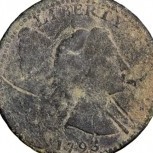
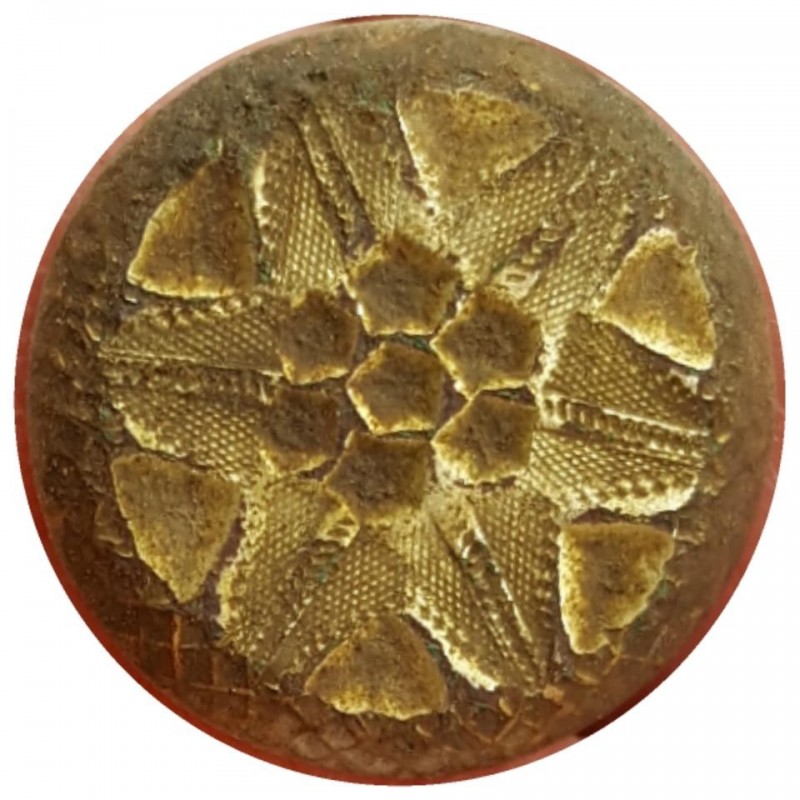
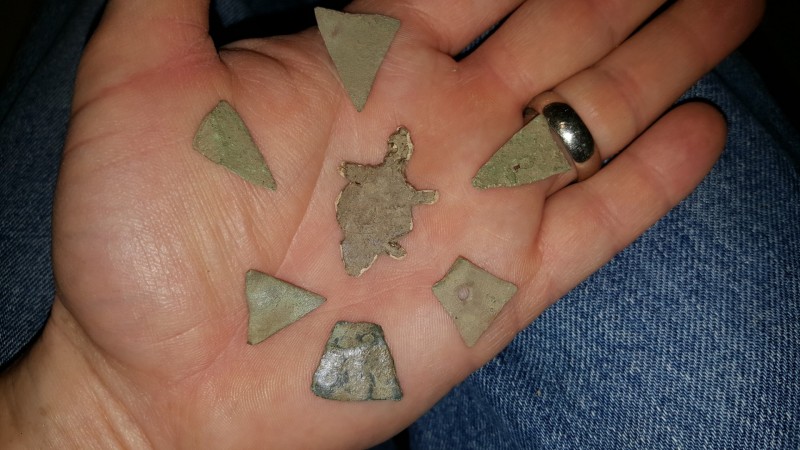
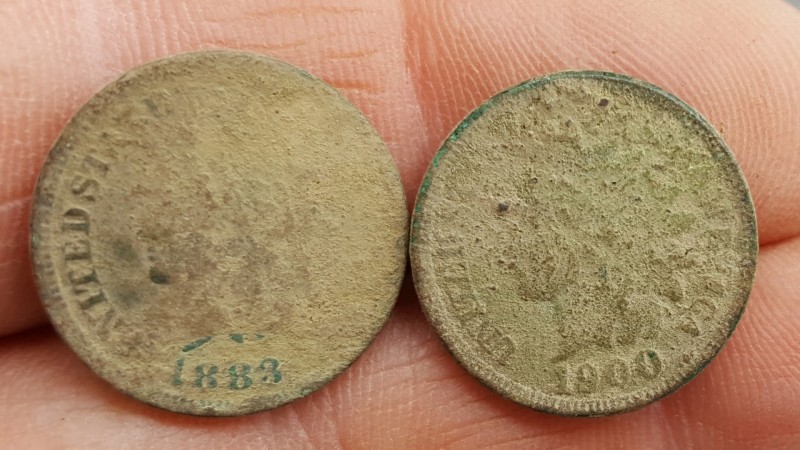
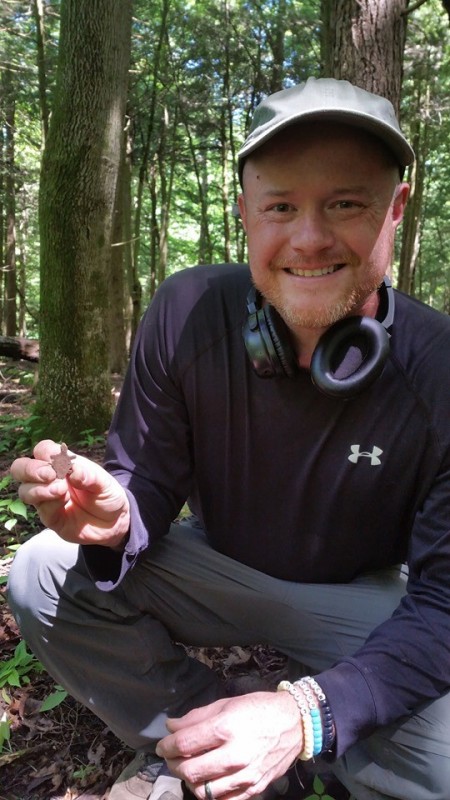
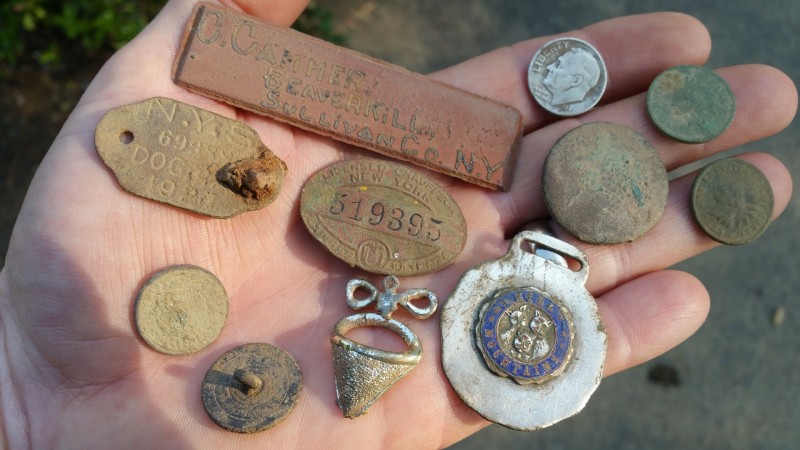
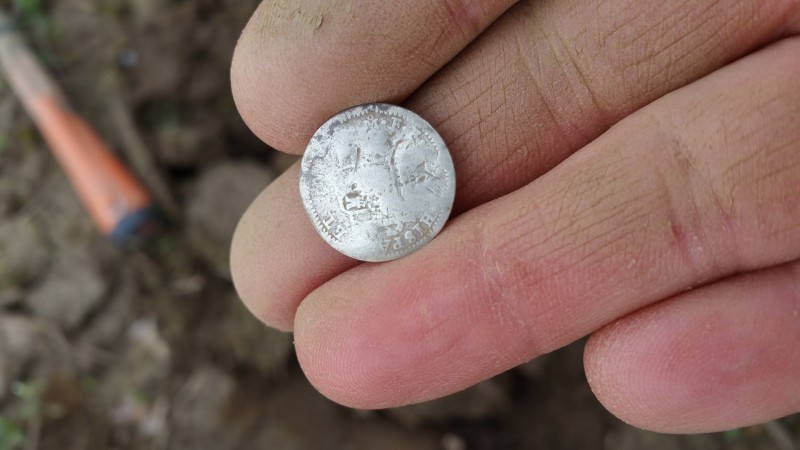
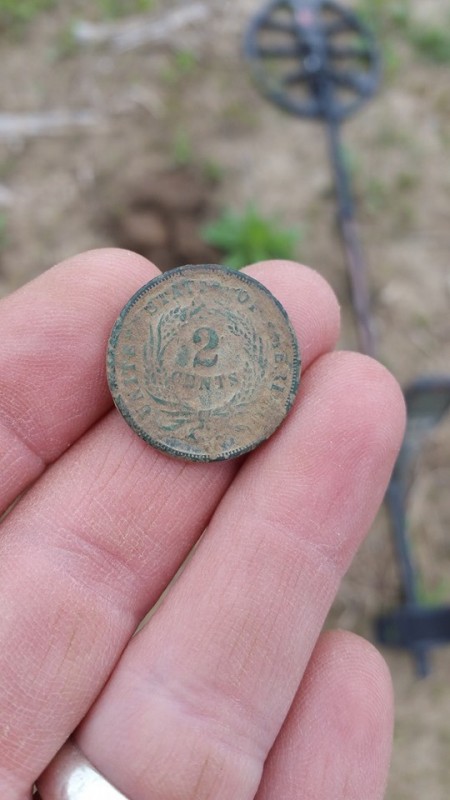
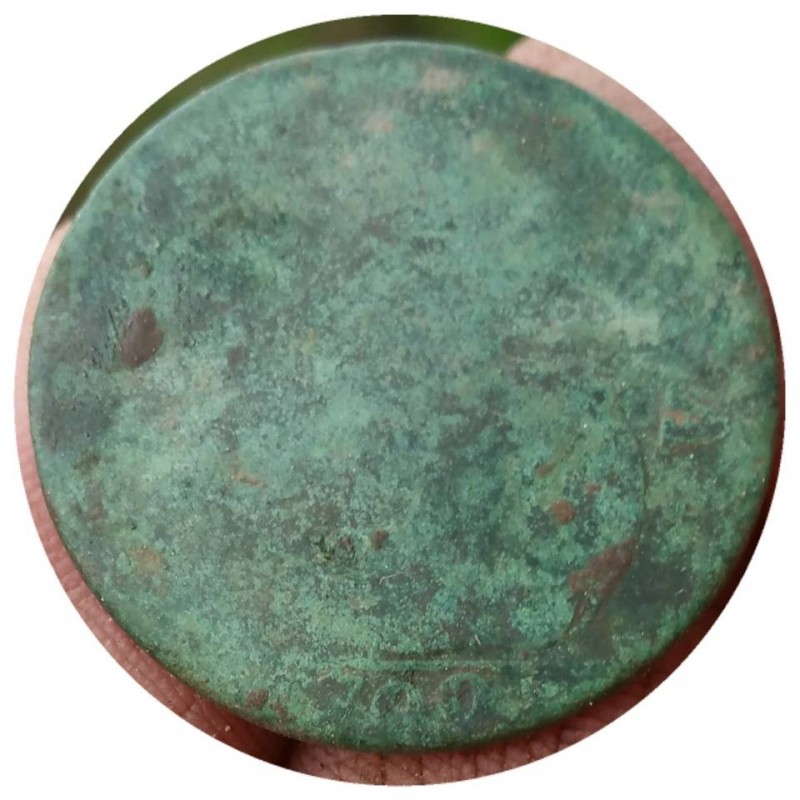
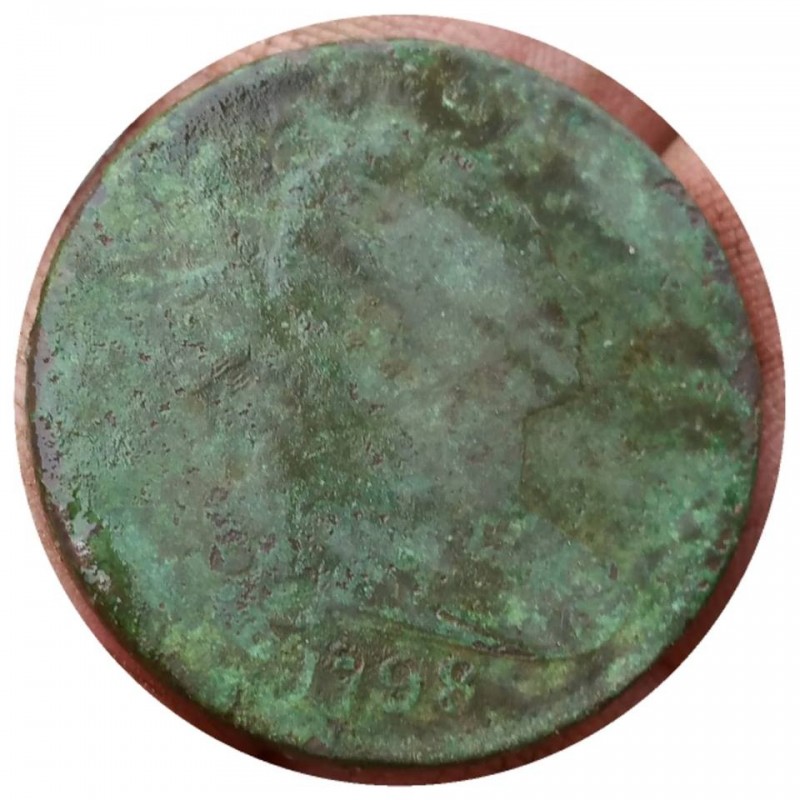
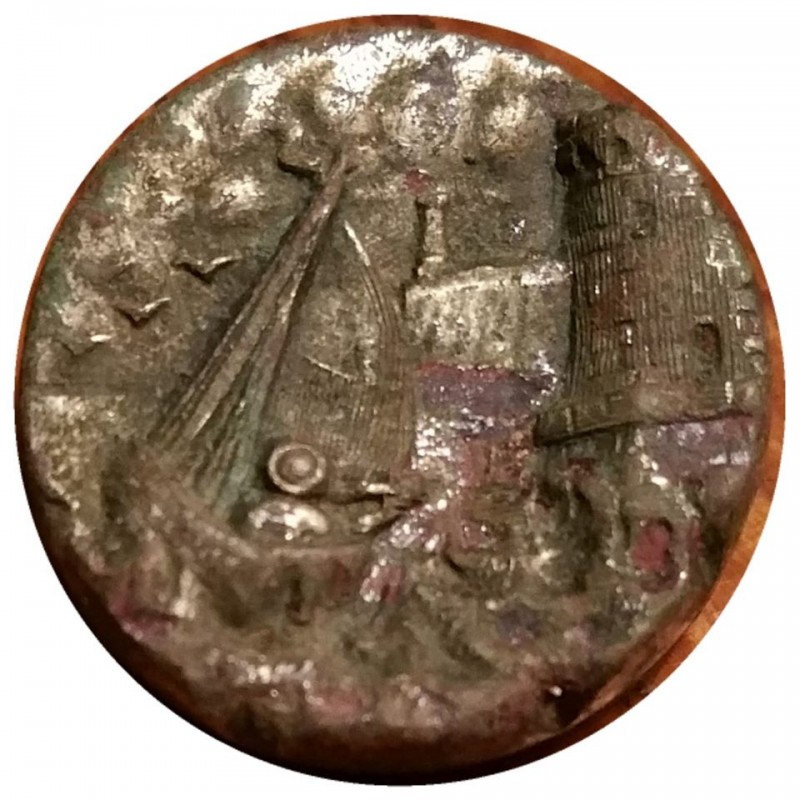
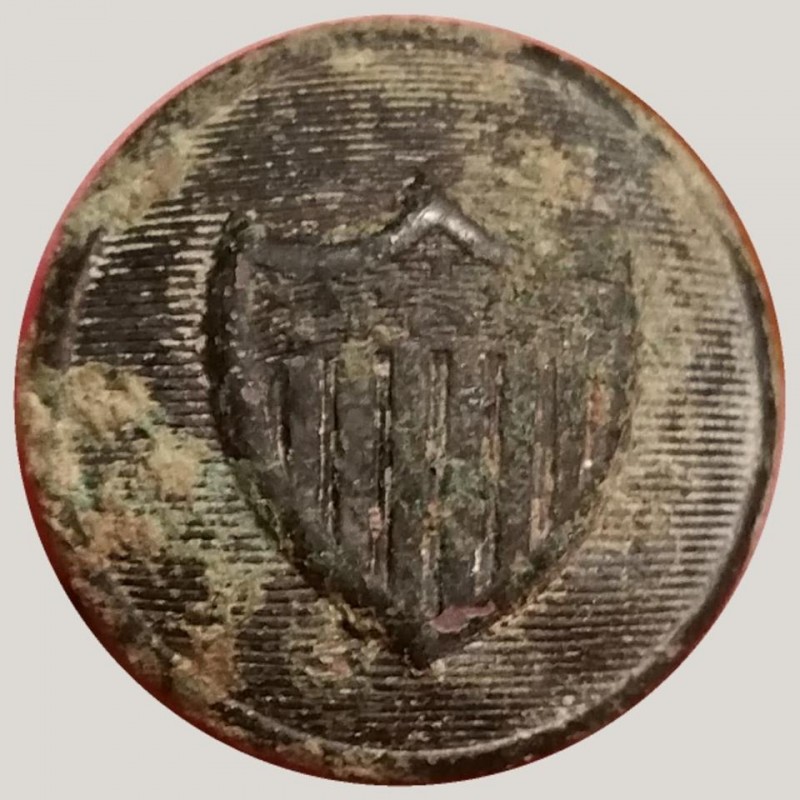
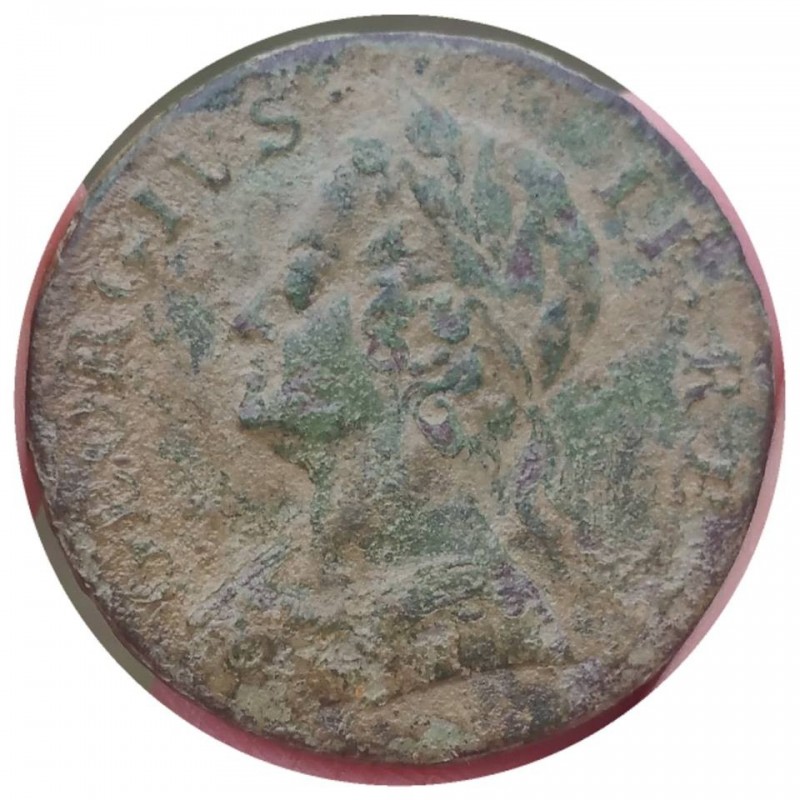
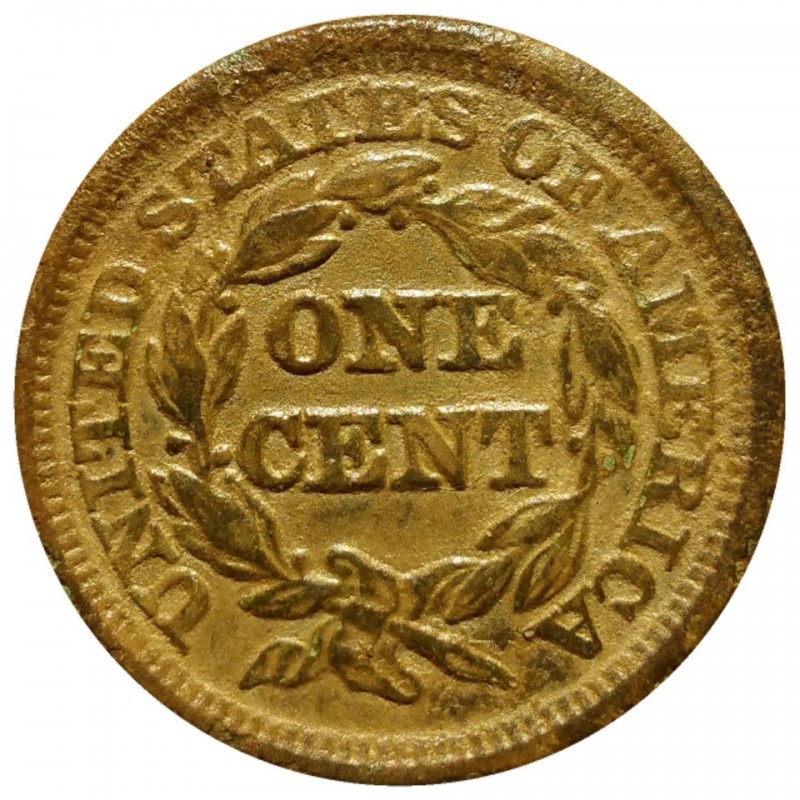
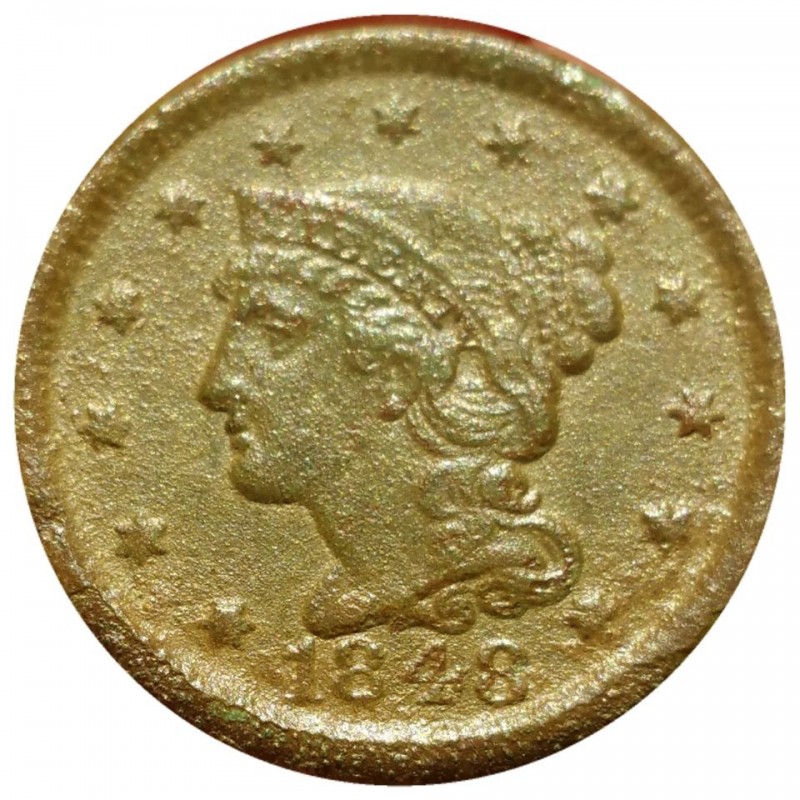
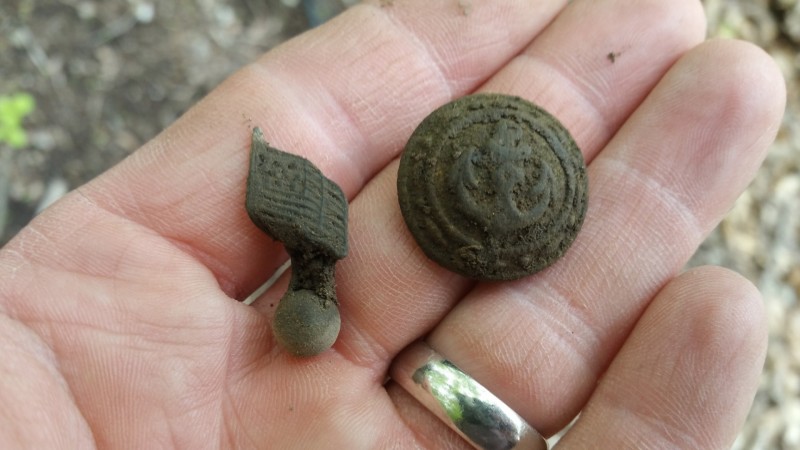

.thumb.jpg.77e4cb5bf39d44bdd2050d2edb7dfdb1.jpg)
